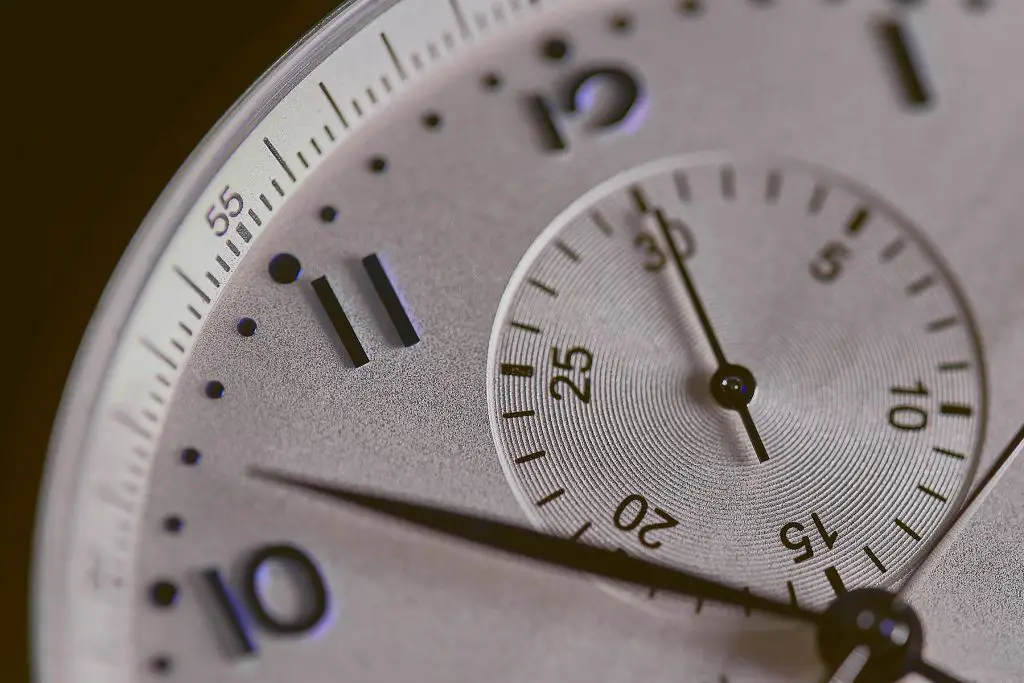This is a guest post by @PattensWizard on Twitter.
Technical analysis is the study of prices over time and the analysis of chart patterns formed by price movements.
So, a relevant question that often traders ponder is “What timeframe should I choose?”
Another question that traders also frequently ask is “Why does trading timeframe matter?”
Well, there is no definite answer to the first question.
Traders choose different trading time frames depending on their personality, trading strategy, style of trading, and how long they prefer to hold their positions.
In order to know the answer to the second question, stay tuned and stay with us till the end of the article.
What are time frames in trading?
There are two approaches to look at timeframes.
The first is the time over which traders hold their trading positions.
The second is the time frames of charts traders use to analyze trends and determine their entry/exit points.
Let’s understand both of these approaches with an example.
If you are a day trader, you will always prefer lower timeframes. Conversely, medium or long-term traders don’t spend their time watching charts with shorter timeframes. Watching 1-minute or 5-minute charts makes no sense for long-term traders. Therefore, they prefer longer timeframes to see only market moves that might be sustained longer.
Why does your trading time frame matter?
The depth, accuracy, and variety of analysis are the keys to a successful trading strategy. Expert analysts consider several factors to conduct their analysis. Factors range from external factors such as news to key performance indicators (KPIs). However, one key aspect that most analysts often overlook, especially novices, is trading time frames. The trading timeframe is the key aspect because of various reasons. You have to consider timeframes because of several important factors. Here there are!
1. Volatility
Volatility means the price range of any financial instrument over a particular period of time. Now, if you are a short-term trader, volatility is among the key players that might determine your success.
Why so? Because volatility brings greater risks when trading on shorter timeframes.
On the other hand, a long-term trader is unlikely to bother much about volatility. Volatility will be less important when you are doing long-term trading, just keep in mind this volatility will still exist but long-term traders will filter it out by aggregating data for longer periods. Therefore, timeframes matter because of volatility in the market.
2. Position Size and Leveraged Trading
Short-term traders often look for small gains. They intend to profit off small price fluctuations. Short-term traders are also interested in leverage trading. Leverage trading allows them to increase their returns. Whereas, long-term traders are less inclined to leverage their trading capital. Long-term traders have to tie up the capital for longer periods. They try to avoid leverage trading for that purpose as it can be risky and expensive for a long period of time. Thus, trading time frames also matter when deciding your position size and leverage trading. The more leverage the less opposite variation you can sustain so the lower the timeframe.
3. Style of Trading
Choosing a timeframe for your trading is also instrumental in making your style of trading suitable for trading. For example, if you don’t have enough time for conducting market analysis and watching trades, you cannot choose shorter timeframes. Your style of trading requires you to opt for longer timeframes. The flip side is active traders who can dedicate enough time for trading. They can afford to pick shorter timeframes. Therefore, timeframes also matter in this regard as well. However, traders often overlook this crucial consideration.
4. Personality type
Another crucial factor is your own personality type. If you are a trader who can patiently wait for a long-term trade to play out, longer time frames may suit your personality type. Conversely, if you are impatient and can’t sit still for long, shorter time frames suit your personality type. Thus, timeframes also matter in this regard as well.
5. Charts and timeframes
Charts are the major source of timing trades and trade timings are what trading is all about. A successful chart-based trading strategy depends on how you are going to monitor price movements and the timeframes to monitor it in. Charting signals are more sensitive when using shorter timeframes and vice versa. Traders also need to be more active in watching charts when using shorter periods. On the other hand, long-term traders can watch charts informally because they want to stay in the game for longer time frames.
6. Risk and timeframes
Trading is a game of risks irrespective of timeframes, still, the level of risk varies from shorter to long-term timeframes. Short-term timeframes carry less risk (understood as adverse price move) as compared to long-term trading timeframes. Long-term traders look to capture bigger price movements. Therefore, they also need to face greater risks.
7. Trading costs
Short-term traders complete more transactions as compared to long-term traders. That means short-term traders have to bear more trading costs. Thus, timeframes also matter in this aspect as well.
8. Trading skills
Short-term traders need to be more skillful and efficient in their trading. As a general rule, you need to be highly skilled and efficient when you trade small price movements over a short period. Only these two capabilities can help you make a profit by trading acute fluctuations.
What is the best timeframe for market analysis and trading?
We understand now why trading time frames matter. So, is there anything like the best timeframe for market analysis and trading? The answer is no. No one can assert that this is the best timeframe for profitable trading. What should be the solution then? Multiple timeframes!
Multiple timeframes enable traders to see a bigger picture. For example, you cannot see a bigger trend on a 1-minute or 5-minute chart. If you want to see the bigger trend, you need to look at multiple timeframes and larger time frames. Only in that way, you can better analyze where the price is heading.
However, the use of multiple timeframes has also some pros. For example, changes in trends first draft some clues on shorter trading time frames.
Final thoughts
Trading time frames matter because of all the aforementioned factors. There is no absolute answer to which timeframe is the best for trading. There is no perfect combination that can guarantee success. A winning trading strategy can be built on any single timeframe or a combination of timeframes. You can also use multiple ones for a better understanding of the market. Still, using multiple timeframes doesn’t guarantee success either. You have to choose your trading timeframe by keeping all the key factors in your mind.
This was a guest post by @PatternsWizard you can check out more of his articles and services at PatternsWizard.com.

